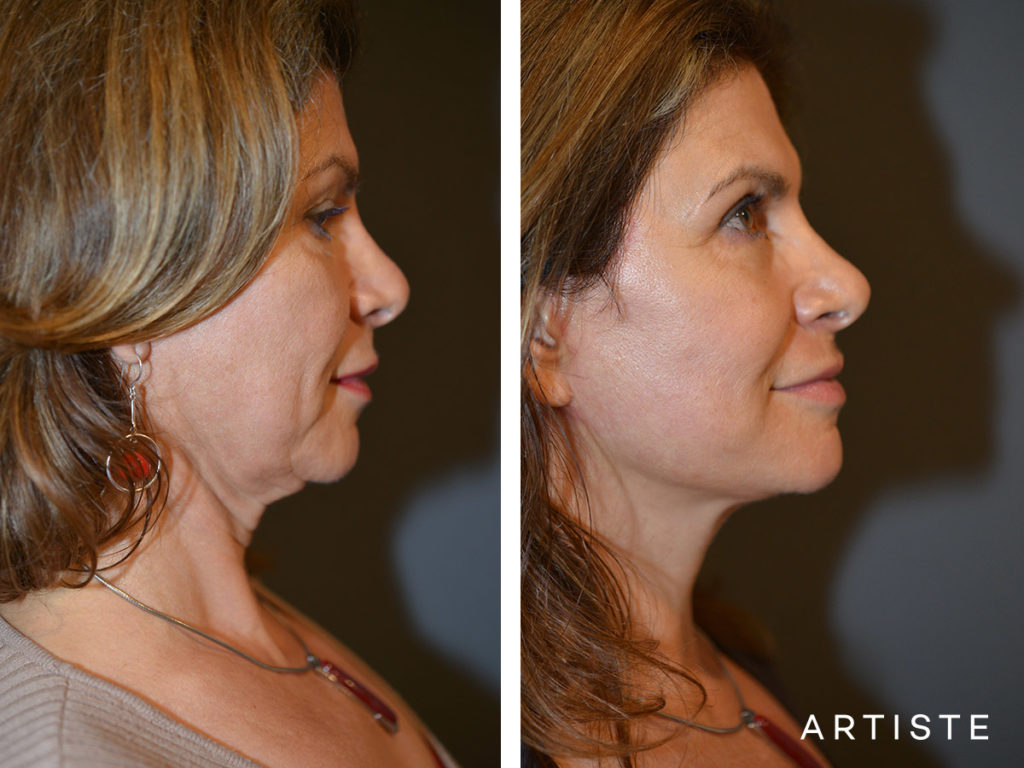What A Deep Plane Facelift May Do For Loose Skin
Model featured in photography

Facial ageing is a natural process that can lead to the development of loose skin, often prompting some individuals to explore options to address this concern. Among the available treatments, a cosmetic surgery technique called the Deep Plane Facelift is known for its approach to address skin ageing-related concerns.
In this article, Artiste Plastic Surgery provides general information on the Deep Plane Facelift, discussing its approach to supporting facial tissues. If you are considering options to address signs of facial ageing, a consultation with a qualified professional can offer personalised advice and guidance tailored to your unique needs.
Understanding the Deep Plane Facelift Procedure
A Deep Plane Facelift is performed as an in-patient procedure in a fully accredited hospital. Depending on each patient’s unique situation, the procedure typically lasts up to six hours and is performed under general anaesthesia administered by a qualified anaesthetist.
This procedure releases important facial ligaments, lifts the muscle and skin layers in one flap, and repositions the nasolabial folds, jowls, and cheeks to a youthful position. Incisions of the surgery are placed behind the hairline and around the ear to ensure an inconspicuous scar. As with any other surgical procedure, deep plane facelift carries potential risks and complications.
Can a Deep Plane Facelift address sagging facial skin?
A Deep Plane Facelift is a technique used to support and reposition facial tissues, aiming to target common concerns associated with the natural ageing process. This approach may potentially help in managing loose skin in areas such as the jowls, neck, and mid-face.
It focuses on repositioning deeper facial layers, which may also assist with features like lower eyelid, nasolabial folds, marionette lines, and changes in facial contours. For those exploring options, consulting with your GP and a qualified professional can provide insights to determine if this procedure is suitable for you.
Reach out to Artiste Plastic Surgery in Sydney
At Artiste Plastic Surgery in Sydney, Specialist Plastic Surgeon Dr Jack Zoumaras offers expertise in the Deep Plane Facelift technique, backed by an in-depth understanding of facial anatomy and the natural ageing process. Dr. Zoumaras is committed to providing personalised guidance to help patients make informed decisions about their treatment options.
Obtaining a GP referral and undergoing BDD screening are necessary for patients who are interested in undergoing cosmetic surgery or non-surgical cosmetic procedures. For further information and to discuss individual needs, feel free to book a consultation with us today.
Disclaimer: At Artiste Plastic Surgery, our Plastic Surgeons led by Dr Jack Zoumaras have been trained to the highest possible degree. All surgery has risks and it is always advised to get a second opinion. Risks are very real and we cannot guarantee any result. Results are illustrated as a guide only. All risks are managed and any need for revision surgery or complications (1-5%) can be managed by our specialist plastic surgeons.
Any statements on how you will feel is based on Level V Evidence:
Level V: How you will feel after plastic surgery varies between individuals, depending on psychological and physical factors. Our internal research is based on how patients in our practice feel after surgery.
The blogs are not a substitute for a medical consultation and do not form as part of the doctor to patient relationship.
SHARE THIS ARTICLE
Sep25
Rhinoplasty Recovery Timeline: What to Expect Week by Week
Disclaimer: At Artiste Plastic Surgery, our Plastic Surgeons led by Dr Jack Zoumaras have been trained to the highest possible degree. All surgery has risks and it is always advised ...
Sep25
Are Non-Surgical Nose Jobs Worth It?
Are Non-Surgical Nose Jobs Worth it? Pros, Cons & Alternatives Are Non-Surgical Nose Jobs Worth it? Pros, Cons & Alternatives Are Non-Surgical Nose Jobs Worth it? Pros, Cons & Alternatives ...
ABOUT ARTISTE
Artiste Plastic Surgery is an Award Winning Specialist Plastic Surgery practice led by internationally trained Dr. Jack Zoumaras, Plastic Surgeon and Peer Reviewed Face Surgeon
Artiste offers the latest Cosmetic Surgical Procedures of the Face, Breast and Body, inspired from leading centres around the world.
STAY IN THE LOOP
Enter your email address below to receive updates on new articles and VIP access to promotions and special offers.
FOLLOW US ON INSTAGRAM
